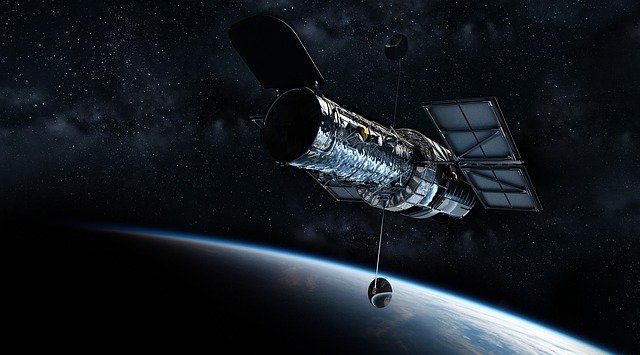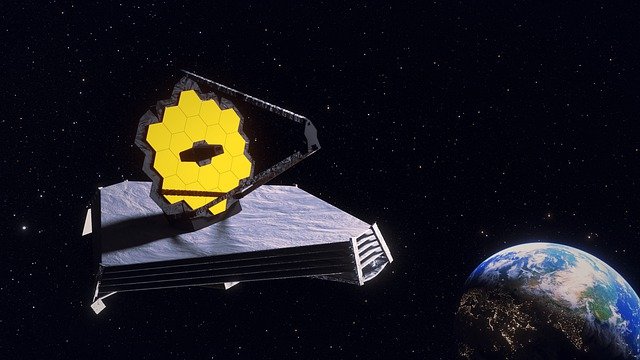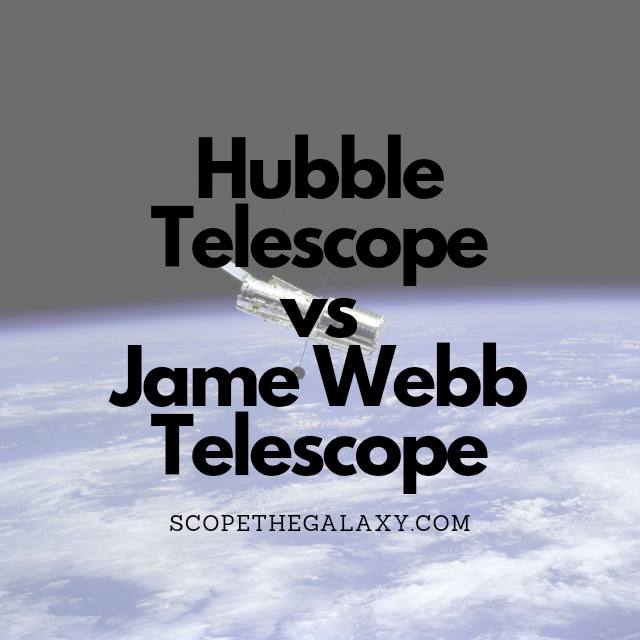*This post may contain affiliate links. This means we may make a commission if you purchase an item using one of our links*
The Hubble space telescope was a groundbreaking piece of scientific equipment first sent to space in 1990. While it remains an essential tool for astronomers today, it is predicted to end its life between 2030-2040.That’s why the James Webb telescope was launched in 2021; this upgraded model will complement and continue the extraordinary work done by Hubble far into the future.
Continue reading to learn about both telescopes, and discover why the James Webb telescope will allow us to understand more about our Universe.
What Is The Hubble Telescope?
Table of Contents

Named after the trailblazing US astronomer Edwin Hubble, the Hubble telescope is a sizable space observatory that revolutionized astronomy from the moment it launched on 24th April 1990.
While it was not the first telescope that we launched into space, it remains one of the largest and most versatile pieces of equipment that is still integral to the field of astronomy today.
Located high above light pollution, clouds, and atmospheric distortions, the Hubble has a crystal clear view of the night sky, allowing astronomers to see stars and galaxies that are light years away. During its lifetime, the Hubble telescope has made more than 1.5 million observations, and more than 19,000 scientific papers have been published from its discoveries.
The Hubble Space Telescope (or HST) is a reflecting telescope that uses mirror optics to gather light from celestial objects, then direct it back to two cameras and two spectrographs. The primary mirror is 2.4 meters, while the secondary one is slightly smaller. It also has various recording instruments that include a wide field planetary camera.
Thanks to five servicing missions, the capacity of the Hubble telescope has grown immensely over the past three decades; now, cutting-edge instruments provide us with an even deeper insight into the Universe. This remains to be the only telescope designed for compatibility with astronaut maintenance.
The Hubble telescope can detect light from ultraviolet to almost infrared, allowing it to capture some breathtaking images of space that have delighted space enthusiasts worldwide. It is predicted to last until somewhere between 2030 and 2040.
What Is The James Webb Telescope?

The James Webb Space Telescope (JWST) is an infrared observatory that orbits the Earth. First deployed on 25th December 2021, this telescope aims to complement the Hubble and extend the longevity of our astronomical discoveries.
After a 30-day mission that saw the JWST travel 1.5 million kilometers, it finally arrived at L2. This gravitationally stable space location has been popular with a number of other space telescopes like the Herschel Space Telescope and Planck Space Observatory.
The upgraded design includes improved sensitivity and broader wavelength coverage. This means that scientists will be able to search nearer to the beginning of time and view previously unseen remnants left behind during the formation of some of the first galaxies. In addition, this powerful telescope can look inside dust clouds and observe the new planetary systems that are just beginning to form.
Its primary mirror boasts a diameter of 6.5 meters and consists of 18 hexagonal mirror segments carefully crafted from gold-plated beryllium. The JWST possesses a light-collecting area of around 25 meters (almost six times greater than the Hubble).
At the cost of $10 billion, this is NASA’s biggest, most powerful, and most ambitious telescope to date. The observations from this space observatory could help us to learn more about the formation of our Universe and explore previously unseen alien worlds.
How Much Better Is The James Webb Telescope Over The Hubble?
The James Webb Telescope was launched 30 years after the Hubble, so it stands to reason that the technology of this device would be superior. Possessing a larger mirror, wavelength coverage, and light-collecting area, this telescope will be able to explore new terrains and transmit crystal clear images for the world to enjoy.
While the Hubble telescope can only view a small portion of the infrared spectrum, the JWST will have far broader coverage. Infrared observations are vital for astronomers as they allow us to see star formations hidden behind clouds of dust and gas.
In its time, the Hubble telescope was a pioneer in the unknown areas of our Universe; it has given scientists and astronomers the data to answer questions that we previously thought impossible. The James Webb telescope is 100 times more powerful than the Hubble, providing its natural successor.
The James Webb telescope is an advancement on the Hubble that aims to push the current boundaries of astronomical research and allow us to answer the fundamental questions of our existence: why are we here? How does the Universe actually work? Are we alone?
Similarities Between The Hubble And James Webb Telescope.
- Both the Hubble and James Webb Telescopes represent groundbreaking technologies that have allowed the scientists of their time to make exciting discoveries.
- Both orbit in space above the clouds and environmental pollution of Earth – this gives them a crystal clear image of our own galaxy as well as the galaxies around us.
Differences Between The Hubble And James Webb Telescope.
- The JWST has improved sensitivity and longer wavelength coverage, allowing scientists to look more closely toward the beginning of time.
- The JWST has six times the light-collecting area compared to the Hubble. This allows it to look back further in time than the Hubble does.
- The Hubble cost $1.5 billion – a fraction of The JWST, which cost $10 billion.
- The Hubble’s primary focus is UV and optical wavelengths, with some infrared light; the James Webb starts at visible light but primarily looks at the universe in infrared light.
Summary
The Hubble Telescope remains one of the biggest, best, and most versatile telescopes ever to exist. With more than 1.5 million observations under its belt, this has been a vital piece of astronomical equipment and inspired scientists worldwide.
Now, the James Webb telescope proudly stands alongside the Hubble to continue its great work. With updated technology and several adjustments, the James Webb telescope will allow us to explore previously unseen parts of the Universe and maybe even answer some questions about our existence.
References
About The Hubble Space Telescope | NASA
Hubble Space Telescope | History, Discoveries, & Facts | Britannica
Key Facts – Webb/NASA
Webb Home (webbtelescope.org)
Comparison: Webb vs Hubble Telescope – Webb/NASA

